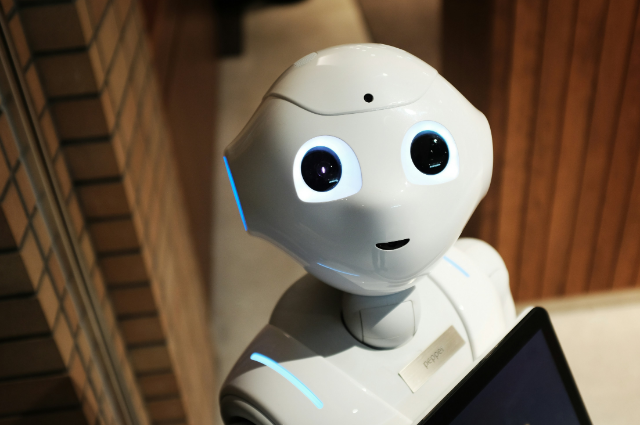
Photo by davide ragusa on Unsplash
RETHINKING MORTALITY IN THE MODERN ERA
- Reimagining the End of Life: The Promise of Cryonics
For ages, the conclusion of life has been perceived as an unalterable endpoint. Yet, recent advancements in contemporary medicine are challenging this entrenched notion. In the 21st century, innovations are redefining the lines that separate existence from non-existence, with cryonics emerging as one of the most contentious topics.
This technique entails the preservation of human bodies or brains at extremely low temperatures, with the aspiration that future scientific breakthroughs will enable the revival of those preserved.
Tomorrow Biostasis, a groundbreaking firm from Germany, is at the forefront of this movement, providing cryonics services that could potentially transform our understanding of death itself.
- Redefining Life’s Finality
As society grapples with the intricate moral, legal, and social dilemmas surrounding life extension, Tomorrow Biostasis presents a groundbreaking perspective on mortality. Their efforts extend beyond mere preservation; they challenge the traditional concept of death. Through the process of cryonics, the company proposes that death could be viewed as a temporary condition, a halt until advancements in medicine and technology allow for possible revival.
- Cryonics: A Journey Through Time
The idea of cryonics has existed since the 1950s, when researchers began to examine the feasibility of freezing biological materials for long-term storage. However, interest in this concept has surged recently, fueled by the growth of life extension studies and transhumanist philosophies that promote the use of technology to overcome human biological constraints. Tomorrow Biostasis is leading this revival, employing state-of-the-art freezing methods to inject new life into the time-honored concept of cryonics.
Reviving Life: The Tomorrow Biostasis Approach
In an era marked by advancements in life extension and transhumanism, Tomorrow Biostasis offers a groundbreaking service that redefines the concept of death. Rather than viewing death as a definitive end, the company envisions it as a temporary state.
By placing deceased individuals in a cryogenic suspension, Tomorrow Biostasis anticipates a future where medical and technological innovations will enable their revival, transforming death from a final destination to a pause, awaiting breakthroughs that could restore life.
- Halting Biological Time
Cryopreservation involves cooling the human body or brain to extremely low temperatures—around -196°C (-321°F)—using liquid nitrogen. This process effectively suspends all biological functions, including the progression of cellular decay. The aim is to preserve the body in a stable condition until future medical technologies can cure the cause of death and potentially reverse aging.
- Preventing Ice Damage
One of the biggest challenges in cryopreservation is avoiding the formation of ice crystals, which can cause severe damage to cells and tissues. Vitrification offers a solution by turning cellular fluids into a glass-like state, preventing ice crystals from forming. This technique involves introducing cryoprotective agents (CPAs), such as dimethyl sulfoxide (DMSO) and ethylene glycol, into the body to replace water in the cells and reduce the risk of ice formation.
Despite its benefits, vitrification is a complex process. High concentrations of CPAs can be toxic, and managing the cooling rate is essential to avoid thermal stress. Uneven cooling can lead to tissue fractures, so researchers continuously work on refining CPA formulations and improving cooling protocols to minimize these risks.
- Agents and Temperature Control
Cryoprotectants are vital in cryopreservation because they protect cells from ice-related damage by replacing water with protective chemicals. To minimize ischemic injury—tissue damage from a lack of oxygen—the infusion of cryoprotectants must occur as soon as possible after legal death is declared.
The cooling process involves a gradual reduction in temperature to prevent thermal shock. Initially, the body is cooled quickly to near-freezing temperatures to slow down metabolism. The body is then cooled progressively to cryogenic levels over several days. This controlled descent is critical to avoiding stress that could fracture tissues. Once the target temperature is reached, the body is stored in liquid nitrogen for long-term preservation, awaiting the possibility of future revival.
- Overcoming the Ultimate Challenge
The goal of cryopreservation extends beyond simply freezing the body—it aims for eventual revival. Although current technology cannot revive cryopreserved individuals, future advances in molecular biology, nanotechnology, and artificial intelligence may pave the way. Nanomedicine, in particular, holds promise for repairing cellular damage and reversing the effects of aging, disease, and freezing injuries.
However, revival presents substantial challenges. While vitrification helps mitigate ice damage, it is not perfect. Cryoprotectants, although protective, can still be toxic, and tissue fractures from thermal stress remain a concern. Over time, molecular damage might accumulate in cryogenic storage, complicating future revival efforts.
Success in reviving cryopreserved individuals will depend on advancements in cryobiology, molecular repair, and the development of cutting-edge technologies capable of overcoming these complex obstacles.
Ethics of Cryonics: Preserving Life or Disturbing Nature?
Cryopreservation, situated at the crossroads of existence, mortality, and the unknown, triggers a wide array of ethical and philosophical discussions. A key question is whether we should even try to reverse death, a process historically deemed irreversible.
Detractors argue that cryonics is akin to "playing with nature," where humans interfere with the natural progression of life and death. Moreover, the thought of bringing individuals back into a future world vastly different from their own adds layers of complexity and uncertainty.

1. Redefining Death
The definition of death lies at the heart of the ethical concerns surrounding cryopreservation. Historically, death has been identified as the permanent end of biological functions, particularly brain activity. However, cryonics questions this finality, suggesting that death may be temporary if the body is kept in a state of suspended animation and revived later. This idea forces us to reconsider the nature of life and death: Are those in cryopreservation truly deceased, or are they merely paused in a prolonged state of dormancy, awaiting scientific advancements?
This debate also interacts with evolving medical definitions of death, particularly with advancements like brain resuscitation, which further blurs the boundary between life and death. If death becomes conditional on future technological progress, our entire perception of mortality could shift, affecting not just cryonics but also medicine, law, and society.
2. Autonomy and Informed Decision-Making
Informed consent is another pressing ethical issue in cryopreservation. To ethically proceed, individuals must fully comprehend the risks, uncertainties, and current limitations, including the acknowledgment that revival may never be possible. Critics argue that some cryonics firms may exploit the fear of death by offering a promise of hope that may not be realized. Ensuring that individuals make autonomous and informed choices without falling victim to false expectations or emotional manipulation is essential.
Informed consent also extends to the impact on families and society. If revived centuries later, a person may find themselves in a world with no remaining social connections or legal identity. Ensuring thorough understanding must address not only the scientific challenges but also the social and psychological consequences of revival.
3. Economic Inequality and Resource Distribution
Cryopreservation is costly, making it accessible primarily to the wealthy, with whole-body preservation costing upwards of ₹1.8 crore and brain-only preservation around ₹67.2 lakh. This raises serious ethical concerns regarding fair resource distribution. Should society prioritize a technology that serves only a privileged few while ignoring more immediate medical needs?
Critics suggest that the resources funneled into cryonics could be better spent addressing global health challenges or providing care to underserved populations. Furthermore, if life extension becomes a reality, only those who can afford it will benefit, widening the gap between rich and poor. This leads to questions about the ethical justifiability of cryonics in a world where basic healthcare remains inaccessible for millions.
4. The Legacy for Future Generations
An important consideration in the cryopreservation debate is the burden placed on future generations. Reviving individuals could strain society’s healthcare, economy, and social services. These revived individuals might need extensive support and resources, potentially overwhelming the infrastructure of the future. Additionally, how would society view these individuals from a bygone era—would they be considered relics, or integrated as equal participants in society?
Introducing individuals who are culturally, technologically, and socially out of sync with their new world presents ethical challenges. Would they have the right to reclaim their former lives, possessions, or citizenship? How would their presence influence social cohesion and relations across generations?
5. Corporate Responsibility in Cryonics
Cryonics companies bear considerable moral responsibility, as they offer these services. They must ensure transparency regarding the uncertainties and limitations of cryopreservation and must avoid exaggerating the chances of revival. Additionally, they must consider the long-term care of cryopreserved bodies, given that the preservation process could last decades or centuries. This includes safeguarding against financial instability, technological obsolescence, and environmental risks that might compromise storage facilities.
6. The Philosophical Question of Life Extension
Cryopreservation taps into humanity’s age-old pursuit of immortality. While the potential to extend life indefinitely entices many, it raises profound questions about the meaning and value of existence. Would an extended, or even infinite, life diminish our sense of purpose? Could cryopreservation alter our appreciation for life’s fleeting moments, or is it simply an extension of humanity’s quest to transcend biology and fate?
Ultimately, cryopreservation pushes us to reconsider what it means to be human. While the possibility of a second life is tantalizing, it forces us to confront the broader consequences of such a profound shift in our understanding of life, death, and the mysteries that lie beyond.
The Societal Transformation: A New Outlook on Life and Death
The possibility of cryogenic preservation and eventual revival holds the potential to redefine humanity’s perceptions of life and death. Should this technology become feasible, its impact on individuals, families, and global communities will be vast and intricate. Existing cultural, social, and legal frameworks would face challenges, triggering ethical questions and reshaping societal structures in profound ways.

- Population Growth and Resource Allocation
The most immediate concern is the impact that cryopreservation and prolonged lifespans could have on population dynamics. If death rates drop significantly or deceased individuals are brought back, society could witness an unprecedented rise in population. This surge would intensify the strain on vital resources such as food, water, housing, and energy.
Economically, the consequences would be enormous. Governments would need to reevaluate resource distribution, healthcare systems, and social security policies. Concepts like retirement could become obsolete, causing ripples across workforce management and generational wealth distribution. Environmental concerns would also mount, as sustaining a ballooning population could overwhelm already diminishing natural resources.
Moreover, reviving individuals frozen for decades or centuries presents complex societal issues. Integrating them into a transformed world would require addressing questions of legal status, property rights, and social roles. New frameworks would be necessary to accommodate these individuals, whose knowledge and skills may no longer align with the modern world.
- Reconsidering Legacy and Life's Purpose
Cryopreservation could fundamentally disrupt traditional ideas about legacy and life's significance. Historically, people have sought to leave behind a lasting mark through their contributions or achievements, driven by the knowledge of their eventual demise.
However, with death becoming a reversible event, the desire for a legacy might lose its urgency. People may no longer feel pressured to achieve within a set lifetime, potentially altering how they approach careers, relationships, and goals. The definition of success might shift, with individuals focusing on continual self-reinvention over infinite lifespans.
Philosophically, cryopreservation alters the perception of humanity. If life can be paused and restarted, how does that reshape our understanding of time, mortality, and existence? The notion of life’s fleeting nature has long influenced human behavior, relationships, and values, and cryopreservation could prompt a reexamination of what it means to live meaningfully.
- Religious and Cultural Repercussions
Cryopreservation intersects with religious and cultural beliefs about life and death, raising significant ethical dilemmas. Many faiths have prescribed rituals surrounding death, often rooted in beliefs about the soul’s journey after death. For example, certain traditions emphasize burial or cremation as essential to spiritual progression.
The concept of reviving bodies could clash with these beliefs, sparking ethical and theological debates. Some may view cryopreservation as a violation of natural order or divine will. Religions that emphasize the sanctity of death might see this technology as obstructing the soul’s transition to the afterlife.
Conversely, some philosophical or spiritual traditions might embrace cryopreservation more readily. Eastern philosophies, for instance, which view life as a continuous cycle of renewal, could find parallels in cryopreservation. Nonetheless, these traditions would still face ethical concerns about reviving individuals outside their natural era.
As this technology progresses, it will be essential to engage with diverse religious and cultural leaders to ensure that ethical and theological concerns are addressed, fostering dialogue that allows cryopreservation to respect varied worldviews.
- The Wealth Divide and Ethical Implications
Cryopreservation technology could deepen socioeconomic inequalities. As it stands, access to such innovations is available only to those who can afford it. This disparity would likely grow, creating a divide between the wealthy, who could potentially extend their lives, and the poor, who might be excluded from such options.
This raises critical ethical concerns:
if life extension becomes reality, will it remain an option only for the affluent? The idea of a society where only the wealthy have the ability to evade death could incite profound social unrest. Policymakers must navigate these ethical minefields and consider how to regulate cryopreservation access to avoid exacerbating social divides.
Tomorrow Biostasis: Pioneers in Human Preservation for Future Revival
Tomorrow Biostasis, a trailblazing organization in the field of cryopreservation, is spearheading efforts to safeguard human life for potential revival in the future. Co-founded by Fernando Azevedo and Dr. Emil Kendziorra, this German-based company is gaining recognition for its innovative approach in cryonics. Specializing in both full-body and brain preservation, Tomorrow Biostasis harnesses breakthroughs in cryobiology and medical science to pursue life extension.

1. Advanced Infrastructure and Specialized Knowledge
At the heart of Tomorrow Biostasis is its dedication to cutting-edge infrastructure. The company's primary facility, situated in Switzerland, utilizes advanced cryogenic technology to preserve human tissues at ultra-low temperatures. Liquid nitrogen-based tanks maintain conditions below -196°C, halting biological activity and preventing cellular damage.
The company also boasts a highly skilled team with expertise in cryobiology, nanotechnology, and regenerative medicine. This multidisciplinary team is continually refining preservation techniques and pioneering research, such as reducing ice formation within cells—a key hurdle in cryonics.
2. Expanding Horizons and Strategic Vision
Though rooted in Europe, Tomorrow Biostasis has set its sights globally. With interest in cryonics growing worldwide, the company is planning to extend its services beyond Europe. By collaborating with international research institutes, it aims to push the boundaries of revival technology, including molecular repair and tissue regeneration.
Additionally, Tomorrow Biostasis is exploring options for establishing new storage facilities in other regions, catering to increasing demand while enhancing safety through decentralized storage.
3. Inclusive Membership and Pricing Approach
Tomorrow Biostasis offers a unique membership model designed to make cryopreservation more accessible. Clients pay an annual fee, which grants them access to future preservation services. This model democratizes cryonics by distributing the cost over time, making it feasible for a wider audience.
Moreover, the company’s pricing structure is competitive, attracting a diverse clientele. By offering more affordable options, Tomorrow Biostasis aims to expand the reach of life extension technologies beyond the wealthy, promoting broader societal acceptance of cryonics.
4. Ethics and Transparency at the Core
Cryopreservation raises significant ethical concerns, and Tomorrow Biostasis is committed to transparency and informed consent. Clients are provided with clear information regarding the risks, uncertainties, and current limitations of cryonics, fostering a climate of trust.
The company also engages with ethical debates on access to cryopreservation technology and the potential societal impacts. Through collaboration with bioethicists and participation in public discussions, Tomorrow Biostasis promotes responsible innovation in this evolving field.
5. Tomorrow Biostasis: Shaping the Future of Cryonics
As a leader in both science and societal engagement, Tomorrow Biostasis is driving the cryonics industry forward. With its pioneering research, global ambitions, and ethical commitments, the company is poised to make life extension a reality for more people.
As cryonics gains mainstream acceptance, Tomorrow Biostasis' role will continue to grow, influencing the future of human preservation through strategic collaborations, innovative technologies, and expanded services.
Barriers to the Resurgence of Cryonics
Although the idea of cryopreservation offers promising possibilities, the technical difficulties it presents are immense and multifaceted. These obstacles push the boundaries of modern science and technology while simultaneously forcing us to grapple with profound philosophical questions surrounding life, death, and human identity. The process of reviving individuals from a cryopreserved state is intricate and layered, with many interconnected challenges to address.
1. Innovations in Cryoprotectants and Vitrification Procedures
A major issue in cryopreservation lies in refining cryoprotectant use and enhancing vitrification methods. Cryoprotectants, vital for ice prevention, often introduce other challenges such as toxicity. Future advancements must aim at creating cryoprotectants that are non-toxic yet effective in protecting tissues from ice damage during the freezing process.
Vitrification involves cooling tissues to a glass-like state without ice formation, but applying it consistently across different tissues—especially complex organs like the brain—remains problematic. Researchers continue to work on methods to ensure successful vitrification on a large scale without localized failures, as these could cause irreparable damage.
2. Nanotechnology and Cellular Repair Mechanisms
Nanotechnology holds potential for addressing damage caused during cryopreservation. The concept is that nanobots, or microscopic machines, could eventually repair cells at a molecular level, countering damage from freezing and aging. However, realizing this vision requires significant progress in the development of these microscopic repair systems.
Creating nanobots that can navigate the human body, identify damaged cells, and restore them accurately is a massive scientific undertaking. Coordination among these machines must be flawless to ensure comprehensive cellular repair without introducing further harm. Mastering such technology will likely require years of intense research.
3. Preserving Consciousness and Personal Identity
One of the most puzzling issues in cryonics is the preservation of memory and consciousness. The brain, far more than just a physical organ, is the core of self-identity, consciousness, and memory. Understanding how to maintain these non-physical elements during the cryopreservation process raises questions that extend into neuroscience and philosophy.
Even if the brain is successfully revived, ensuring that the individual retains their memories and sense of self is a significant challenge. Since memories are stored in intricate neural networks, disrupting these structures during preservation could result in personality changes or memory loss. Ethical considerations arise if the revived person is no longer the same as before.
4. Reducing Cryoprotectant Toxicity
Though essential to preventing ice formation, cryoprotectants pose risks due to their potential toxicity. These chemicals replace water in cells, but at higher concentrations, they can harm cellular structures. Research is ongoing to develop less toxic alternatives and improve methods for swiftly removing cryoprotectants during the warming process to reduce the risk of damage.
Controlling the cooling and warming process precisely is key to advancing cryopreservation, ensuring that tissues are shielded without harmful side effects.
5. Regenerating Tissues and Restoring Organ Function
Even if cellular damage can be repaired, regenerating entire tissues and organs to ensure proper function remains a challenge. For instance, a cryopreserved heart or kidney may need regeneration to operate correctly after revival. This challenge overlaps with the field of regenerative medicine, where scientists are exploring techniques to grow organs from stem cells.
In cryonics, the regeneration of damaged tissues may require advanced therapies such as stem cell applications or 3D bioprinting. The objective is to ensure that revived individuals are fully healthy, with properly functioning organs and systems.
6. Reliance on Future Societal and Technological Development
The assumption that future societies will possess the necessary resources and technology to revive cryopreserved individuals introduces a level of uncertainty. Cryonics banks on the hope that future generations will prioritize technological development in this field, despite potential competing demands or global crises.
Shifting societal values, environmental challenges, or political conflicts could deprioritize cryonics research, leaving individuals in a frozen state indefinitely. The future readiness of technology to address these problems adds another layer of unpredictability.
7. Precision in Rewarming Procedures
One of the most sensitive stages in cryopreservation is the rewarming process. Tissues must be returned to their normal temperatures in a controlled manner to avoid damage. If done too quickly, thermal stress can result, while a slower rewarming process might lead to ice crystal formation. Striking the perfect balance is critical to successful tissue revival.
Researchers are working on controlled rewarming protocols and specialized equipment to mitigate these risks. Uniformly heating tissues to avoid temperature fluctuations is essential for preserving their viability after cryopreservation.
These challenges highlight the vast complexity of cryonics, requiring breakthroughs across multiple fields for success.
The Ripple Effects: Society, Economy, and Morality
A. Economic Repercussions
The widespread adoption of cryonics could drastically reshape the global economy. As cryopreservation technologies advance and become commercially viable, they may give rise to new industries centered around life extension and biotechnology, potentially evolving into a multi-trillion-dollar sector. Related fields, such as insurance and estate planning, would need to adapt to a reality where death might no longer be permanent. Life insurance policies, for example, would have to incorporate the possibility of resuscitation, while inheritance laws may require updates to handle the revival of individuals after prolonged periods in cryogenic suspension.
Moreover, the healthcare sector could experience shifts as resources are redirected from treating aging-related illnesses to efforts aimed at preventing death itself. This could spur innovation in medical technologies like nanomedicine, specifically designed to repair and revive cryopreserved bodies.
B. Legal and Policy Dilemmas
The legal framework surrounding cryonics is fraught with complexity. A key issue is the definition of death and legal personhood. Current legal standards define death as the permanent cessation of vital functions, but cryonics challenges this notion by suggesting that preservation at sub-zero temperatures could allow for future revival.
This raises important questions about the legal status of cryopreserved individuals—are they dead, or merely in a state of stasis?
Significant revisions to inheritance laws would also be necessary. If someone were revived after many years, how would their assets be handled during their absence? Would they have the right to reclaim their property, or would new legal frameworks be established to address such unprecedented situations?
Furthermore, the policies surrounding resource allocation for cryonics could become contentious, particularly if governments are involved in regulating or financing the technology. Ethical debates might arise over whether prioritizing cryonics over other urgent healthcare needs is a fair use of resources.
C. Social Inequities
The high cost of cryonics creates a significant disparity, as only the wealthy can afford the procedure. This could intensify social inequalities, leading to a future where the affluent may extend their lives, potentially indefinitely, while others are left behind. A society could emerge where one's longevity and quality of life are directly tied to their socioeconomic status, further widening the gap between the rich and poor.
Such a future might see an elite class living for centuries, accumulating wealth and influence across multiple lifetimes, while those without access to cryopreservation are increasingly marginalized. This disparity could lead to a society where power and privilege are concentrated among a small group, threatening the foundations of equality and social justice.
D. Psychological and Social Impacts
The psychological and societal consequences of cryonics could be far-reaching. The idea that death could be reversed might drastically change human behavior and relationships. Individuals may become more cautious, knowing that they have the potential for a second chance at life. This could influence choices around careers, relationships, and personal risk-taking.
On a broader scale, the traditional progression of life stages—childhood, adulthood, and old age—may be disrupted. Those who live for centuries could have multiple careers, families, and personal identities, fundamentally altering the way society views aging and life progression. Concepts like retirement, generational divides, and even cultural continuity may need to be reevaluated.
Additionally, society might face challenges in reintegrating individuals revived after long periods in cryogenic suspension, as their worldviews and cultural references could be vastly different from those of the contemporary population. This could lead to the formation of distinct social groups of revived individuals, who may feel disconnected from modern society due to the significant time gap they have experienced.
Final Thoughts:
The realm of cryopreservation, led by pioneers such as Tomorrow Biostasis, blurs the boundary between imaginative prospects and tangible advancements. Although the idea of preserving and potentially restoring those who have passed is still largely hypothetical, continuous progress in related scientific areas suggests that it could eventually become a reality. This innovative approach not only provides a vision of a time when death may be reinterpreted but also prompts us to reassess our fundamental notions of existence.
Exploring the possibilities of cryonics raises significant inquiries regarding our essence, sense of self, and the nature of humanity. Regardless of whether it becomes a practical option in the future, cryopreservation compels us to reflect on our own finitude and the scope of human capabilities. Visionaries like Tomorrow Biostasis are expanding the horizons of what may be achievable, igniting discussions that could transform our understanding of life and mortality.

. . .
References:
- https://www.thehindu.com/
- https://www.hindustantimes.com/
- https://www.bhaskar.com/
- https://economictimes.indiatimes.com/
- https://www.businesstoday.in/
- https://www.computerweekly.com/
